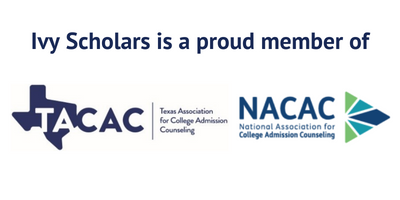It is generally understood and accepted that applying to college in the early round gives you an edge in the admissions process. As with so much in life, however, there is nuance in how this works. This is because there are different kinds of early application, and different kinds of students who take advantage of them.
In this article we’re going to look at some of the nuance that exists in the early rounds of applications, and how this nuance can impact acceptance rates. We’ll go through different kinds of applications, and different ways students can be advantaged in this process. Let’s get started!
Different Kinds of Early Admissions
We’ve written before about the difference between Early Decision and Early Action, but we’ll cover the basics here, because they relate directly to the matter at hand. Here’s a quick rundown on how they compare.
Early Action:
- You apply to a college early, usually in November, and hear back early as well, usually in mid to late December
- You may apply to any number of colleges Early Action, and have no commitment to attend any of them
- Some colleges have a higher acceptance rate for students who apply Early Action, others do not
Early Decision:
- You apply to college early, and hear back early. Unlike Early Action, you always hear back before the Regular Decision deadline
- You agree to attend the college you apply to Early Decision if they admit you, and may only apply to a single college ED
- You may apply to any number of other colleges Early Action
- This offers a significant increase in your chances of admission
Restrictive Early Action:
- You apply as if you are doing Early Action, but may only make a single application; you may not apply to other schools EA or ED
- This provides a boost in admissions chances
- You are not obligated to attend the school if you are admitted
You may also apply to some schools early without it being one of these early application types. For example, you can apply to the UC system schools as soon as their applications open, but they don’t have an official Early Action program. Applying early grants no benefit, save for the fact that you can stop worrying about working on your application that much sooner.
At base, these are the kinds of early applications, and not all are the same (though they are easy enough to confuse). Early Decision grants students the largest boost to their admissions chances, though Early Action statistically seems much easier as well, just looking at the numbers. In the next sections, we’re going to look at the accuracy of that, and if applying Early Action is truly a benefit to your odds of acceptance.
Student Athletes and Early Action
The first group to discuss, and one of the best examples of this phenomenon, are student athletes. We’ve written before about how the recruitment process works for athletes, and how this can improve odds of admission, but those students who do not participate in athletics are often unaware of just how this works, or how much recruitment can increase the odds of acceptance.
When a student is recruited by a school that cares about sports, they get a boost to their admissions chances. How much of a boost depends on a number of different factors, namely:
- How good of an athlete they are, and how much the coach advocates for them
- How prepared they are for the school academically
- How much weight the admissions office places on athletics
We’ll use Harvard as an example, since they had to release all of their admissions files due to a lawsuit. When they are reviewing a student athlete, if that student has been recruited, they automatically get the highest possible rank for their extracurriculars. This makes being a recruited athlete, in any sport, is weighted at the same level as winning an international competition or being published in an excellent professional journal, providing a major boost to admissions.
That is often not very surprising to students; there have long been stereotypes about jocks getting into college just to play football or baseball, regardless of their academic skills. What many students fail to realize is that this is true across multiple sports, not just the ones which make headlines.
Now the exact sports any given college participates in vary, but especially among top schools, most colleges partake in a lot of sports, and recruit for them. This doesn’t mean coaches have free reign; most can give admissions a number of names; these names are then tagged in admissions, and their files given extra weight. How many names each coach is allowed to submit depends on sport and college; it can be as low as two or three, or more than a dozen for popular sports.
So why does this matter here? Because these recruited athletes almost universally apply Early Action. They apply early, get accepted early, and comprise a remarkable percentage of the early pool of applicants. Just how large a portion of the pool they make up depends on college, but it is often a plurality of the students accepted.
Thus, early action acceptance rates especially are skewed; yes they might be higher than the rates for the regular decision round, but a significant portion of those admitted are athletes, leaving fewer seats than you might expect for students who aren’t. To give a sense of how extensive this practice is, here’s the percentage of student body who are athletes at a number of Ivy League and Ivy+ schools. Not all of these athletes were recruited or got an admissions boost, but many did:
Note that MIT is not included on this chart, because MIT is one of the few colleges that does not advantage athletes in the admissions process at all.
This of course doesn’t mean that you need to be a student athlete to get in during the early round of admissions, but a significant number of people who do get in early are athletes. This means that the actual acceptance rate in the early round may be lower than what is reported, since a significant percentage of the students admitted are athletes.
Legacy Students
Another group who often benefits from applying early, and who often make up a significant percentage of the early class, are legacy admits. We’ve written before about what legacy admits are, but in short, they are the children or other relatives of alumni of a university (who counts as a legacy varies from school to school). These students are given a boost to their admissions chances; not enough to guarantee acceptance of course, but enough to mean that acceptance rates for legacy students are far above those of their non-legacy peers.
The reason we bring this up now is because a significant number of legacy students apply in the early round. The exact number of students who apply this way is hard to track, as universities do not always release the number of legacies who apply, nor do they differentiate by admissions deadline. That said, we do know that legacy students tend to have their parent’s alma mater as a top choice, and are likely to apply in the early round for that reason.
We should also note that top universities are the most likely to take legacy status into account (with a few exceptions), and provide some of the largest admissions boosts to legacy students. There are sadly not widely reported stats on this phenomenon, but it is quite prevalent at all of the top colleges.
Self-Selection in Students
The final point to consider for applying early is self-selection. Generally, students who are better prepared and organized apply earlier; they simply have the time management skills needed to handle these applications, and the drive to get them done early. This is not universally true of course, but it is a consistent trend. We were high school students too at one point, and the urge to procrastinate was and remains a pressing concern for students.
Thus, the students who do choose to apply early tend to be the kinds of highly motivated and prepared students that colleges already look to admit. If you are reading this article, you are likely among their number; with a full resume and excellent academics. This isn’t meant to discourage you from applying, but to note that you will be among academic peers in the early admissions class.
Some students are surprised by this, as an analysis of the average GPA and test scores of students admitted early shows them level with or lower than students admitted in the regular decision round. This is because of student athletes, who may be qualified with strong but imperfect academic records, and who primarily apply in this round.
Having a strong academic record is good, but it will not help you stand out, merely demonstrate that you are in good company.
Final Thoughts
Our goal with this article is not to discourage you from applying in the early round of admissions, but to highlight that statistics viewed without context can be incredibly misleading. Yes, the early rounds of admission have higher acceptance rates and oftentimes lower test score and grade point averages, but there are significant asterisks on all of those.
You can and should apply early if a school is your first choice, or if you are simply eager to get the work of applications done with so you can focus on high school. Applying early can also provide an edge, but this is mostly true for Early Decision; with Early Action, your odds do not shift significantly in most cases.
There are many factors to consider when choosing when and where and how to apply to college, and many moving parts to keep track of while you do. This is one, and important one to be sure, but just one amongst a much broader whole. If you are looking for help keeping your own applications on track, and ensuring that you get all of the needed materials completed on time, then schedule a free consultation today. We have a long experience working with students to help them achieve their collegiate dreams, and we’re always happy to hear from you.







